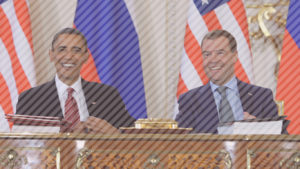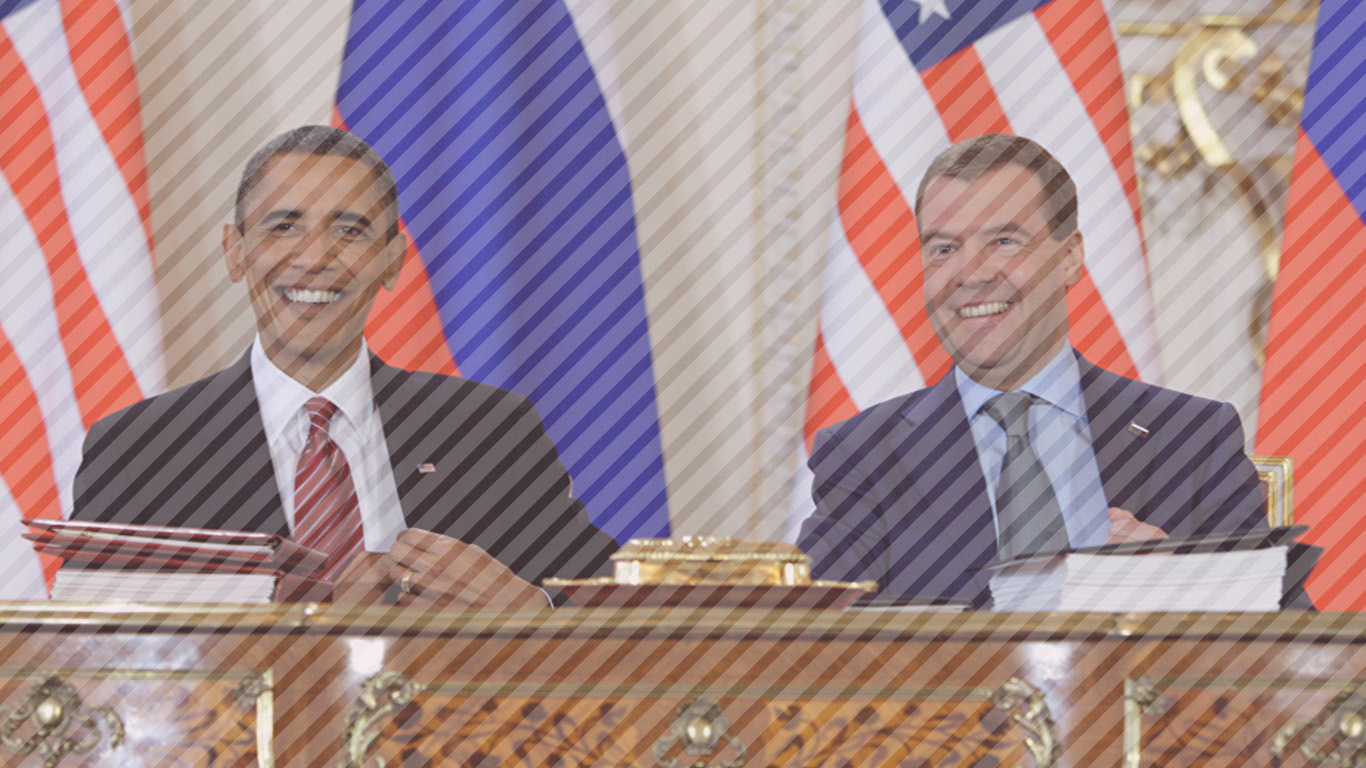What Lies Ahead for the New START Treaty?
The demise of the Intermediate-Range Nuclear Forces (INF) Treaty in 2019 leaves the Strategic Arms Reduction (New START) Treaty as the only remaining agreement on arms control to limit the USA and Russia’s nuclear weapons stockpiles. Having previously claimed that Russia had violated the INF requirements, a few months ago the USA officially announced that it would withdraw from the Treaty on Open Skies as well, which was signed in 1992 and came into force in 2002. The end of the INF Treaty certainly brought into question the future of the New START Treaty at an international level, not least because it will expire in February 2021 unless both sides agree to a five-year extension. With the expiration date now just five months away, the question of whether the treaty will be extended for five more years by the USA and Russia is a growing concern. Amid the diplomatic tensions between the two countries, uncertainty over the treaty’s continuation remains high on the global agenda.
The New START treaty limits both sides to 1,550 deployed warheads and was signed in Prague on April 8, 2010 during the Obama administration, coming into force on February 5, 2011. The political environment prior to the USA and Russia signing the treaty was very different to today. It was former U.S. President Barack Obama’s first term in office and on April 5, 2009 in Prague he had delivered a celebrated speech in which he mentioned future negotiations for the New START Treaty with Russia, which in turn prompted the bilateral dialogue to start. The USA and Russia announced that the treaty’s main limitations would take effect by February 5, 2018.
Today’s U.S. Trump Administration wants China to join talks in order to extend the New START Treaty. However, China has no plans to join the treaty and has rejected to participate in the talks. President Vladimir Putin said “if no one feels like extending the agreement – New START – well, we won’t do it then,” despite previously saying that Russia was ready to extend the treaty. According to the Stockholm International Peace Research Institute (SIPRI), as of January 2020 China has a calculated stockpile of approximately 320 nuclear warheads, while the USA has nearly 3800 and Russia has 4315.
Surely, as there is a need for growing commitment to nuclear arms control, a much broader initiative which includes other nuclear weapon states would be preferable. And while it might be one option to consider China as a third party in the treaty, it is however not practical for two reasons: First, considering there is only a little less than six months to the treaty’s expiration date, there is not enough time to convince China through negotiations. Second, rather than a genuine effort by the U.S. President to preserve the last remaining arms control agreement, it seems more like a political move for President Trump to want China to join. Therefore, deliberating over whether China will be included in the treaty only complicates and slows down the process of agreeing an extension for the USA and Russia.
The Future of the New START Treaty
As the New START Treaty is the now last existing bilateral agreement between the USA and Russia on arms control, it is critical. The world needs the treaty to be extended and a strong commitment from both sides to continue nuclear weapons control. A failure to extend the treaty threatens both the future of non-proliferation and the strategic relationship between the USA and Russia. In a scenario of no extension, not just both parties, but also the whole world will be constantly uncertain as to the number of strategic weapons and the future of arms control. It is important to point out the fact that Russia and the USA’s combined nuclear forces are far greater than the rest of the nuclear weapon states’. According to the Federation of American Scientists, the USA and Russia own 91% of the world’s nuclear warheads. Consequently, the two countries also have a bigger share of global responsibility. In the worst-case scenario, of no bilateral restrictions on the USA and Russia’s nuclear stockpile, the world will see a more isolated environment.
Previous cases such as the INF Treaty, the Joint Comprehensive Plan of Action (JCPOA and also known as the Iran nuclear deal), and the Treaty on Open Skies show that, President Trump is putting extra effort in to removing American initiative and responsibility from bilateral and multilateral agreements. The upcoming U.S. Presidential elections in November 2020 will be important for the future of the New START Treaty and the most plausible opportunity to continue the arms control agreement will be President Trump failing to be re-elected.
Growing division: The nuclear ‘haves and have nots’
Despite the fact that the New START arms control treaty differs from other treaties -considering that it is a bilateral agreement- it still has implications for other treaties. The division between the world’s nuclear ‘haves and have nots’ is growing deeper. Should the New START Treaty expire in February, one possible repercussion would be the negative effect on the Treaty on the Non-Proliferation of Nuclear Weapons (NPT). As the cornerstone treaty on arms control, its work on non-proliferation and nuclear disarmament will be damaged without an extension of the New START Treaty. Both the USA and Russia are signatories of the NPT, and without a control mechanism over their nuclear weapons there would surely be further polarization between not only nuclear and non-nuclear weapon states, but also between nuclear weapon states themselves. Moreover, this could also make NNWS’ feel more pessimistic about future efforts. Ultimately, bilateral pacts have a role in the multilateral and global efforts. In this regard the USA and Russia must keep in mind how their decision on the future of the New START Treaty will impact the productivity of the NPT Treaty among member states.
the cornerstone treaty on arms control, its work on non-proliferation and nuclear disarmament will be damaged without an extension of the New START Treaty. Both the USA and Russia are signatories of the NPT, and without a control mechanism over their nuclear weapons there would surely be further polarization between not only nuclear and non-nuclear weapon states, but also between nuclear weapon states themselves. Moreover, this could also make NNWS’ feel more pessimistic about future efforts. Ultimately, bilateral pacts have a role in the multilateral and global efforts. In this regard the USA and Russia must keep in mind how their decision on the future of the New START Treaty will impact the productivity of the NPT Treaty among member states.
The Iran Nuclear Deal
The JCPOA deal, commonly referred to as the Iran Nuclear Deal, includes other countries such as the United Kingdom, France, Russia, China, and Germany, as well as the USA. It imposes limitations on Iran’s civilian nuclear enrichment program and was signed in July 2015. On May 8, 2018 U.S. President Trump announced that the U.S. government is withdrawing from JCPOA. In the case of no extension to the New START Treaty, the progress of the JCPOA may also be affected.
There is no doubt that the USA’s withdrawal from the Iran Deal, followed by the. implementation of economic sanctions on Iran by the USA, and escalating U.S.-Iranian diplomatic tensions (especially heightened by the U.S. killing of top Iranian General Qasem Soleimani in January 2020) have left the future of the already fragile agreement, hanging in the balance. The U.S. government’s withdrawal not just from the Iran Deal, but also from other treaties such as the INF and the Treaty on Open Skies, has shaped the rest of the world’s perception of Washington’s level of reliability on critical international issues. Having said that, without any arms control agreement, which is binding for Russia and the USA, Iran may feel less limited regarding its nuclear weapons program in the future. After all, if there is no control mechanism for the worlds’ two leading nuclear weapon states, then one of the reasons for non-nuclear weapon states, such as Iran, to maintain a nuclear weapon free zone is erased.
Conclusion
Considering the necessity for an international control mechanism on the nuclear weapons stockpiles of the world’s two biggest nuclear weapon states, it is vital that the USA and Russia extend the New START Treaty. Instead of breaking ties with the agreement, the extension is both needed and strategically practical for the short term, not only for Moscow and Washington but also for the world. Given the previous experience of the INF Treaty, if both sides end the New START Treaty, this may also have negative implications for the future bilateral diplomatic efforts on arms control and non-proliferation. At a time of increasing strains on international relations, and in the year of the 75th anniversary of Hiroshima and Nagasaki bombings, the future of the New START Treaty is facing the same fate as the INF agreement. Both parties must avoid the potential negative domino effect that this might cause for the global security. And whilst it is far from a silver bullet, extending the New START Treaty can nevertheless bring a piece of optimism and security to the world.
What Lies Ahead for the New START Treaty?
The demise of the Intermediate-Range Nuclear Forces (INF) Treaty in 2019 leaves the Strategic Arms Reduction (New START) Treaty as the only remaining agreement on arms control to limit the USA and Russia’s nuclear weapons stockpiles. Having previously claimed that Russia had violated the INF requirements, a few months ago the USA officially announced that it would withdraw from the Treaty on Open Skies as well, which was signed in 1992 and came into force in 2002. The end of the INF Treaty certainly brought into question the future of the New START Treaty at an international level, not least because it will expire in February 2021 unless both sides agree to a five-year extension.


 Elif Beyza Karaalioglu
Elif Beyza Karaalioglu